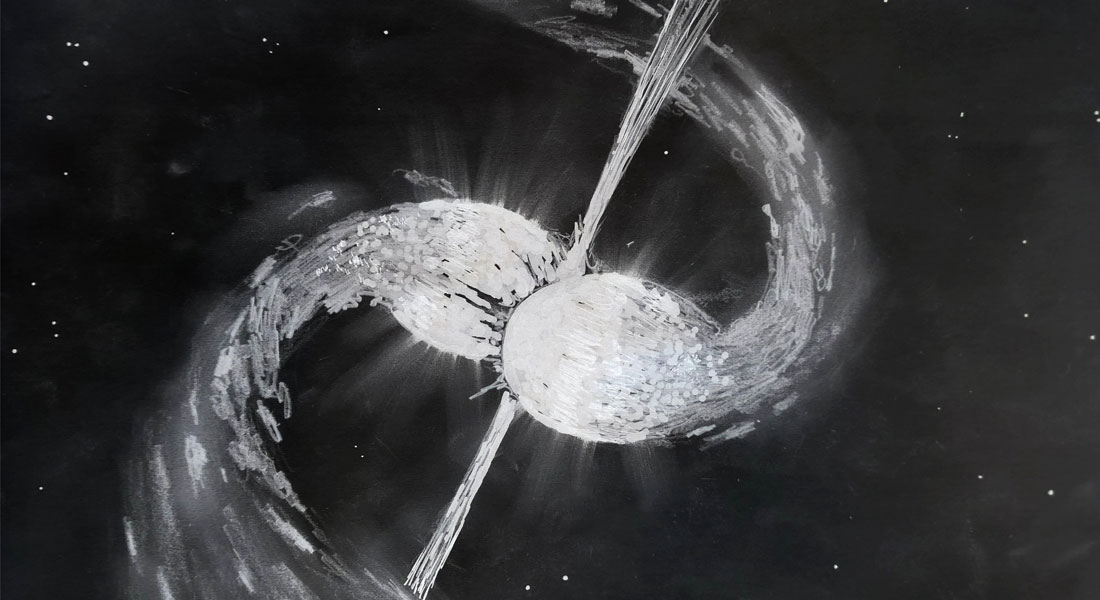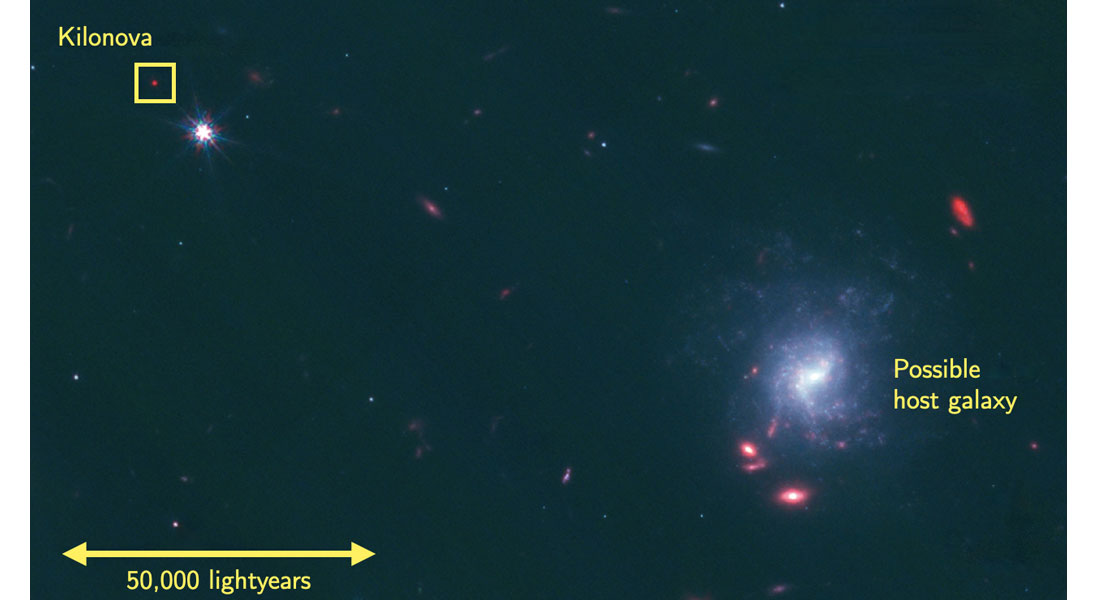Webb observes the glowing embers of colliding neutron stars
Gamma-ray bursts are brief flashes of the most energetic form of light, reaching us from the distant Universe. They have their origin in stellar explosions, but the exact circumstances are still debated. Now a team of researchers including astronomers from the Niels Bohr Institute has used the James Webb Space Telescope to study a gamma-ray burst, which turned out to be the second-brightest ever seen. The study, which has just been published in Nature, revealed the creation of the element tellurium which had not been recognized before.

About once per day, a brief flash of gamma radiation, the most energetic form of light, reaches Earth from the distant Universe. We have known these gamma-ray bursts for over 50 years, and for 25 years we have also seen their long-lasting “afterglows” of less energetic light, such as UV, visible, and infrared light. These afterglows have taught us that gamma-ray bursts have their origin in the immense explosions of dying stars.
But on 7 March 2023, the Universe decided to teach us something new.
As is always the case, the burst was caught by a satellite; in this case Fermi Gamma-ray Space Telescope. Such satellites can only pinpoint the location of the bursts very roughly, but immediately trigger automatic notifications to a network of astronomers, who then decide whether or not to take any action.
In this case, the burst turned out to be the second-brightest ever detected — action was definitely needed! First of all, was it bright because it was an extreme explosion, or because it was nearby?
But comparing the results from the two telescopes revealed a puzzling result.
“We were lucky to be granted time at both telescopes,” says Malesani. “The gamma-ray burst was rather long-lasting, over three minutes, which would normally imply that this were the result of a supernova. But comparing the results revealed that the afterglow was much brighter in the infrared than in the visible light. This is not expected from a supernova.”
Instead, this infrared light hinted at another origin, namely a kilonova — the somewhat less energetic explosion following the collision of two compact neutron stars.
To space!
To investigate this unusual phenomenon, the astronomers wanted to observe it again. But with the afterglow quickly fading away, and with Earth’s atmosphere absorbing a significant fraction of infrared light, there was only one option:
“We decided to request observing time at humankind’s most advanced infrared observatory, the James Webb Space Telescope,” says Luca Izzo, astronomer at INAF in Naples and affiliated with DARK, another research center at the Niels Bohr Institute, who also participated in the study. “The images from Webb established how exceptionally infrared the object was — a telltale sign of a kilonova.”
Not only did the data confirm that the burst did indeed emerge from a kilonova; Webb also had another surprise for the astronomers.

A chemical furnace
Kilonovae are theorized to be the main mechanism for producing the majority of the heaviest half of all elements in the Universe, including gold, platinum, iodine, and plutonium. However, only a few kilonovae have been discovered so far, and in these only two heavy elements have ever been robustly detected, namely strontium and yttrium, with atomic numbers 38 and 39.
With the new discovery, it appears that the astronomers can now add a third to the list.
“We were thrilled when we realized what James Webb had provided: a spectral emission line that seems to be emitted from the 52nd element in the periodic table, tellurium,” says Daniele Bjørn Malesani. “This substantiates our belief that the creation of heavy elements does happen when compact objects merge. The detection is really a remarkable feat, also showing that kilonovae can emit very bright gamma-ray bursts and, conversely, that some bursts do pinpoint kilonovae.”
The last point is another reason why the discovery is important: Kilonovae were expected to be found due to their emission of gravitational waves, but as yet, only one has been located that way. The discovery therefore opens up a new avenue to find these chemical furnaces, namely by their emission of gamma-ray bursts.
The team of astronomers, which included several other members from DAWN and DARK, as well as many astronomers from other universities, report their findings in an article published in the journal Nature today.
Contact
Article
Levan et al. (2023): Heavy element production in a compact object merger observed by JWST
